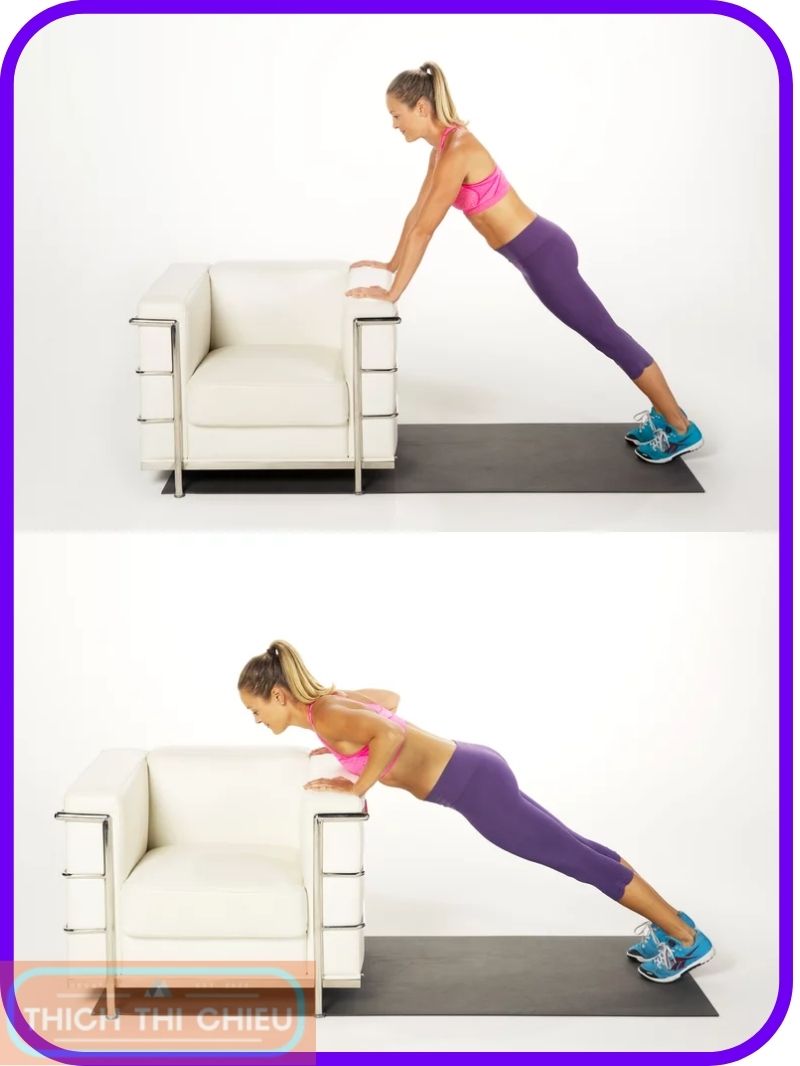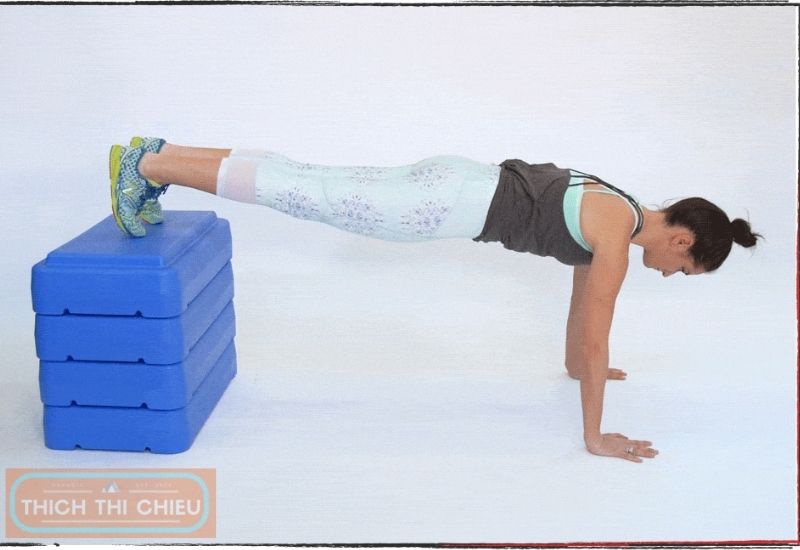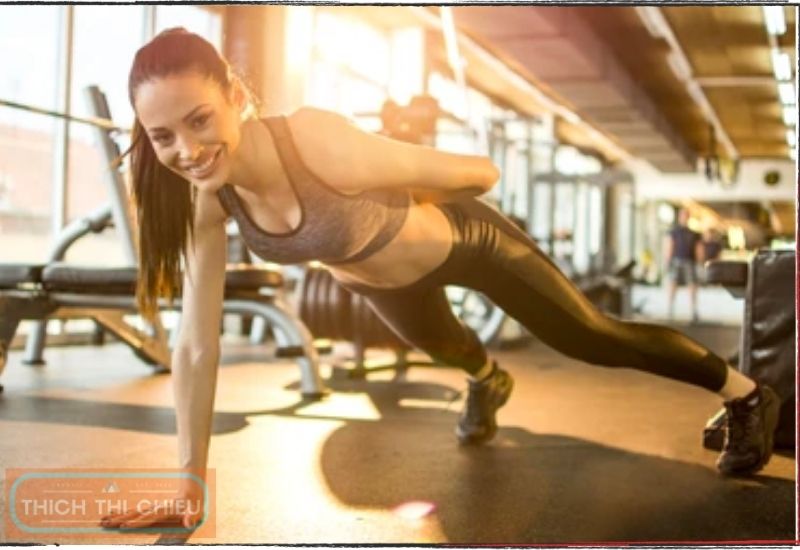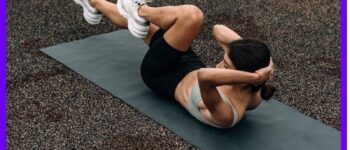Push-ups are a compound exercise that works multiple muscle groups in the upper body, including the chest, triceps, shoulders, and core. They are a great way to build strength and endurance, and they can be modified to make them accessible to people of all fitness levels.
Push-ups are beneficial for women for a number of reasons. They can help to improve upper body strength and endurance, which can lead to a more toned and sculpted physique. Push-ups can also help to improve posture and balance, and they can reduce the risk of injuries.
There are many different types of push-ups, each with its own unique benefits. Here are a few examples:
- Standard push-up: This is the most basic type of push-up, and it is a great way to build strength and endurance in the upper body.
- Wide hands push-up: This variation places more emphasis on the chest muscles.
- Triangle push-up: This variation places more emphasis on the triceps muscles.
- Incline push-up: This variation is easier than the standard push-up, and it is a good option for beginners.
- Decline push-up: This variation is more challenging than the standard push-up, and it is a good option for advanced exercisers.
When choosing the right push-ups for your fitness level and goals, it is important to consider your strength and endurance. If you are a beginner, start with basic push-ups, such as the standard push-up and the incline push-up. As you get stronger, you can try more challenging variations, such as the decline push-up and the triangle push-up.
If you are unsure which push-ups are right for you, or if you have any injuries, it is always a good idea to consult with a certified personal trainer.
If you are looking for a great way to build strength and endurance in your upper body, push-ups are a great option. There are many different types of push-ups to choose from, so you can find a variation that is right for your fitness level and goals.
To learn more about the different types of push-ups and their benefits, read our article “10 Best Types Of Push-Ups For Women.”
Standard Push-Up
How to do a standard push-up:
- Start in a plank position with your hands shoulder-width apart and your body in a straight line from your head to your heels.
- Lower your body down until your chest touches the ground, keeping your core engaged and your back straight.
- Push back up to the starting position.
Benefits of the standard push-up:
- Strengthens the chest, triceps, shoulders, and core.
- Improves upper body stability and balance.
- Increases cardiovascular health.
Wide Hands Push-Up
How to do a wide hands push-up:
- Start in a plank position with your hands wider than shoulder-width apart.
- Lower your body down until your chest touches the ground, keeping your core engaged and your back straight.
- Push back up to the starting position.
Benefits of the wide hands push-up:
- Strengthens the chest muscles.
- Improves upper body stability and balance.
- Increases cardiovascular health.
Triangle Push-Up
How to do a triangle push-up:
- Start in a plank position with your hands placed together in a triangle shape under your chest.
- Lower your body down until your chest touches the ground, keeping your core engaged and your back straight.
- Push back up to the starting position.
Benefits of the triangle push-up:
- Strengthens the triceps muscles.
- Improves upper body stability and balance.
- Increases cardiovascular health.
Incline Push-Up
How to do an incline push-up:
- Place your hands on an elevated surface, such as a bench or a box. Your hands should be shoulder-width apart.
- Start in a plank position with your body in a straight line from your head to your heels.
- Lower your body down until your chest touches the elevated surface, keeping your core engaged and your back straight.
- Push back up to the starting position.
Benefits of the incline push-up:
- Strengthens the upper body muscles, including the chest, triceps, and shoulders.
- Improves upper body stability and balance.
- Is a good modification for beginners or people with injuries.
Decline Push-Up
How to do a decline push-up:
- Place your feet on an elevated surface, such as a bench or a box. Your feet should be shoulder-width apart.
- Start in a plank position with your body in a straight line from your head to your heels.
- Lower your body down until your chest touches the ground, keeping your core engaged and your back straight.
- Push back up to the starting position.
Benefits of the decline push-up:
- Strengthens the upper body muscles, including the chest, triceps, and shoulders, more than the standard push-up.
- Improves upper body stability and balance.
- Is a good challenge for advanced exercisers.
Knee Push-Up
How to do a knee push-up:
- Start in a plank position with your knees on the ground. Your hands should be shoulder-width apart and your body in a straight line from your head to your knees.
- Lower your body down until your chest touches the ground, keeping your core engaged and your back straight.
- Push back up to the starting position.
Benefits of the knee push-up:
- Strengthens the upper body muscles, including the chest, triceps, and shoulders.
- Improves upper body stability and balance.
- Is a good modification for beginners or people with injuries.
Wall Push-Up
How to do a wall push-up:
- Stand facing a wall with your feet shoulder-width apart and your hands placed on the wall at shoulder-width apart and at chest height.
- Lean forward until your body forms a straight line from your head to your heels.
- Bend your elbows and lower your chest towards the wall, keeping your core engaged and your back straight.
- Push back up to the starting position.
Benefits of the wall push-up:
- Strengthens the upper body muscles, including the chest, triceps, and shoulders.
- Improves upper body stability and balance.
- Is a good modification for beginners or people with injuries.
Plyometric Push-Up
How to do a plyometric push-up:
- Start in a plank position with your hands shoulder-width apart and your body in a straight line from your head to your heels.
- Lower your body down until your chest touches the ground.
- Explosively push back up, lifting your hands off the ground.
- Clap your hands together in mid-air and land softly with your hands back on the ground.
Benefits of the plyometric push-up:
- Improves upper body power and explosiveness.
- Strengthens the chest, triceps, and shoulders.
- Improves upper body stability and balance.
Medicine Ball Push-Up
How to do a medicine ball push-up:
- Start in a plank position with your hands shoulder-width apart and your body in a straight line from your head to your heels.
- Place a medicine ball between your hands.
- Lower your body down until your chest touches the medicine ball, keeping your core engaged and your back straight.
- Push back up to the starting position.
Benefits of the medicine ball push-up:
- Strengthens the chest, triceps, and shoulders.
- Improves upper body stability and balance.
- Adds an element of instability to the push-up, which can help to improve muscle activation and performance.
One-Arm Push-Up
How to do a one-arm push-up:
- Start in a plank position with your hands shoulder-width apart and your body in a straight line from your head to your heels.
- Place one hand behind your back.
- Lower your body down until your chest touches the ground, keeping your core engaged and your back straight.
- Push back up to the starting position.
Benefits of the one-arm push-up:
- Strengthens the upper body muscles, including the chest, triceps, and shoulders.
- Improves upper body stability and balance.
- Is a great challenge for advanced exercisers.
Conclusion
Push-ups are a great exercise for strengthening your upper body muscles, including your chest, triceps, and shoulders. They are also a good way to improve your upper body stability and balance.
There are many different types of push-ups, so you can find a variation that is right for your fitness level and goals. If you are new to push-ups, start with modified versions, such as knee push-ups or wall push-ups. As you get stronger, you can progress to more challenging variations, such as decline push-ups and one-arm push-ups.
Here are some tips for doing push-ups safely and effectively:
- Keep your core engaged throughout the entire movement.
- Don’t let your back sag or your hips arch.
- Lower your body down until your chest touches the ground, but don’t rest on the ground.
- Push back up to the starting position with a smooth, controlled movement.
Here are some tips for incorporating push-ups into your workout routine:
- Start with a warm-up, such as light cardio and dynamic stretching.
- Do two to three sets of push-ups, with 10-15 repetitions per set.
- Rest for one minute between sets.
- As you get stronger, you can increase the number of sets and repetitions, or add more challenging variations.
You can do push-ups as part of a full-body workout, or you can do a dedicated push-up workout. Here is an example of a dedicated push-up workout:
- Wide hands push-ups: 3 sets of 10-15 repetitions
- Triangle push-ups: 3 sets of 10-15 repetitions
- Incline push-ups: 3 sets of 10-15 repetitions
- Decline push-ups: 3 sets of 10-15 repetitions
You can also combine push-ups with other exercises, such as rows, pull-ups, and dips, to create a more comprehensive upper body workout.
Listening to your body and stopping if you feel any pain is important. If you have any injuries, be sure to talk to your doctor or physical therapist before starting a push-up routine.












Leave a Reply